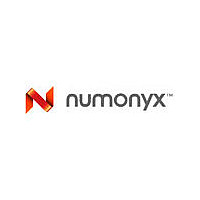M28W160ECB70ZB6E NUMONYX, M28W160ECB70ZB6E Datasheet - Page 16

M28W160ECB70ZB6E
Manufacturer Part Number
M28W160ECB70ZB6E
Description
IC FLASH 16MBIT 70NS 46TFBGA
Manufacturer
NUMONYX
Datasheet
1.M28W160ECT70ZB6E.pdf
(50 pages)
Specifications of M28W160ECB70ZB6E
Format - Memory
FLASH
Memory Type
FLASH - Nor
Memory Size
16M (1M x 16)
Speed
70ns
Interface
Parallel
Voltage - Supply
2.7 V ~ 3.6 V
Operating Temperature
-40°C ~ 85°C
Package / Case
46-TFBGA
Package
46TFBGA
Cell Type
NOR
Density
16 Mb
Architecture
Sectored
Block Organization
Asymmetrical
Location Of Boot Block
Bottom
Typical Operating Supply Voltage
3|3.3 V
Sector Size
8KByte x 8|64KByte x 31
Timing Type
Asynchronous
Interface Type
Parallel
Lead Free Status / RoHS Status
Lead free / RoHS Compliant
Available stocks
Company
Part Number
Manufacturer
Quantity
Price
Company:
Part Number:
M28W160ECB70ZB6E
Manufacturer:
Micron Technology Inc
Quantity:
10 000
M28W160ECT, M28W160ECB
BLOCK LOCKING
The M28W160EC features an instant, individual
block locking scheme that allows any block to be
locked or unlocked with no latency. This locking
scheme has three levels of protection.
■
■
■
The lock status of each block can be set to
Locked, Unlocked, and Lock-Down.
fines all of the possible protection states (WP,
DQ1, DQ0), and
a flowchart for the locking operations.
Reading a Block’s Lock Status
The lock status of every block can be read in the
Read Electronic Signature mode of the device. To
enter this mode write 90h to the device. Subse-
quent reads at the address specified in
will output the lock status of that block. The lock
status is represented by DQ0 and DQ1. DQ0 indi-
cates the Block Lock/Unlock status and is set by
the Lock command and cleared by the Unlock
command. It is also automatically set when enter-
ing Lock-Down. DQ1 indicates the Lock-Down sta-
tus and is set by the Lock-Down command. It
cannot be cleared by software, only by a hardware
reset or power-down.
The following sections explain the operation of the
locking system.
Locked State
The default status of all blocks on power-up or af-
ter a hardware reset is Locked (states (0,0,1) or
(1,0,1)). Locked blocks are fully protected from
any program or erase. Any program or erase oper-
ations attempted on a locked block will return an
error in the Status Register. The Status of a
Locked block can be changed to Unlocked or
Lock-Down using the appropriate software com-
mands. An Unlocked block can be Locked by issu-
ing the Lock command.
Unlocked State
Unlocked blocks (states (0,0,0), (1,0,0) (1,1,0)),
can be programmed or erased. All unlocked
blocks return to the Locked state after a hardware
reset or when the device is powered-down. The
status of an unlocked block can be changed to
Locked or Locked-Down using the appropriate
16/50
Lock/Unlock - this first level allows software-
only control of block locking.
Lock-Down - this second level requires
hardware interaction before locking can be
changed.
V
hardware protection against program and
erase on all blocks.
PP
V
PPLK
- the third level offers a complete
APPENDIX
C.,
Figure
Table
22., shows
Table
9., de-
5.,
software commands. A locked block can be un-
locked by issuing the Unlock command.
Lock-Down State
Blocks that are Locked-Down (state (0,1,x))are
protected from program and erase operations (as
for Locked blocks) but their lock status cannot be
changed using software commands alone. A
Locked or Unlocked block can be Locked-Down by
issuing the Lock-Down command. Locked-Down
blocks revert to the Locked state when the device
is reset or powered-down.
The Lock-Down function is dependent on the WP
input pin. When WP=0 (V
Lock-Down state (0,1,x) are protected from pro-
gram, erase and protection status changes. When
WP=1 (V
(1,1,1) and Locked-Down blocks can be individu-
ally unlocked to the (1,1,0) state by issuing the
software command, where they can be erased and
programmed. These blocks can then be locked
again (1,1,1) and unlocked (1,1,0) as desired while
WP remains high. When WP is low, blocks that
were previously Locked-Down return to the Lock-
Down state (0,1,x) regardless of any changes
made while WP was high. Device reset or power-
down resets all blocks, including those in Lock-
Down, to the Locked state.
Locking Operations During Erase Suspend
Changes to block lock status can be performed
during an erase suspend by using the standard
locking command sequences to unlock, lock or
lock-down a block. This is useful in the case when
another block needs to be updated while an erase
operation is in progress.
To change block locking during an erase opera-
tion, first write the Erase Suspend command, then
check the status register until it indicates that the
erase operation has been suspended. Next write
the desired Lock command sequence to a block
and the protection status will be changed. After
completing any desired lock, read, or program op-
erations, resume the erase operation with the
Erase Resume command.
If a block is locked or locked-down during an erase
suspend of the same block, the locking status bits
will be changed immediately, but when the erase
is resumed, the erase operation will complete.
Locking operations cannot be performed during a
program
D., COMMAND INTERFACE AND PROGRAM/
ERASE CONTROLLER
mation on which commands are valid during erase
suspend.
IH
) the Lock-Down function is disabled
suspend.
Refer
STATE, for detailed infor-
IL
), the blocks in the
to
APPENDIX












